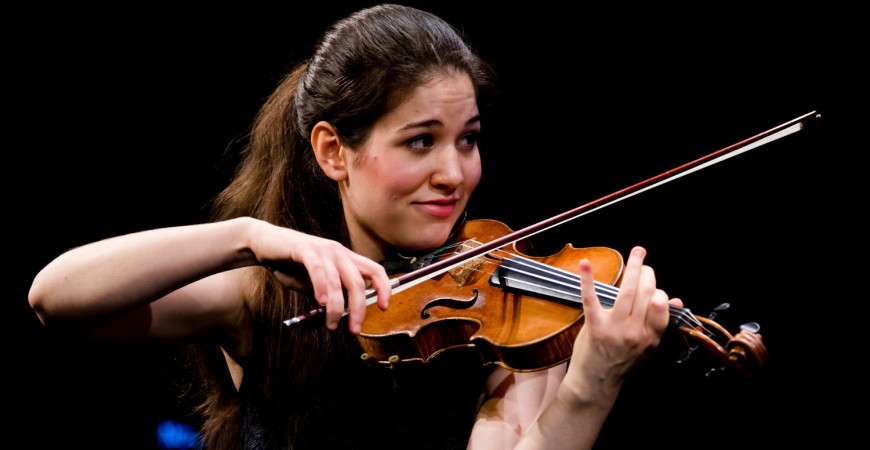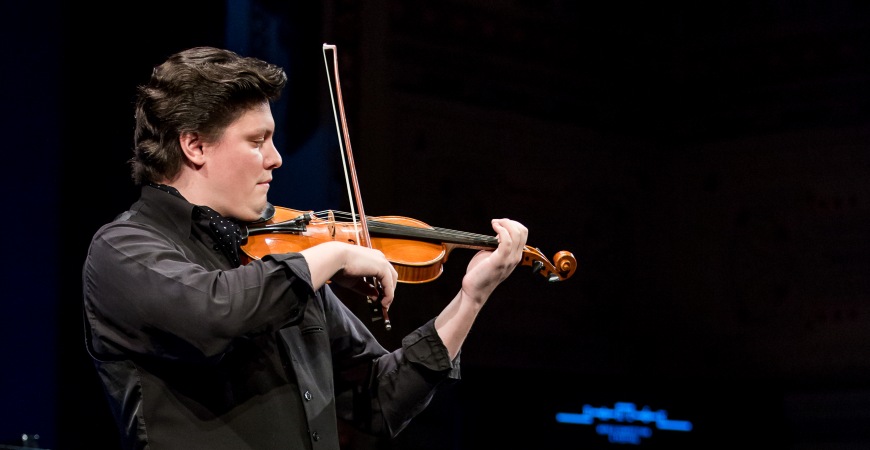Two Hungarian competitors shortlisted for the Semi-final of the Bartók World Competition
The Preliminary round of the Bartók World Competition and Festival took place in four sessions on 10 and 11 September. From the Hungarian contestants, Ágnes Langer and Gábor Homoki got shortlisted to perform at the Semi-final.
44 competitors from 16 countries of 4 continents have come to Budapest to testify to their talent and hard work before the globally acclaimed jury members and the audience. Following the two-day Preliminary round, the jury agreed on the list of the semi-finalists, who will have the opportunity to prove themselves this afternoon and evening. For the list of the semi-finalists, please click here.

Ágnes Langer (Photo: Zoltán Tuba / Liszt Academy)
The musicologist László Stachó, who had introduced the performances on Saturday - gave a highly fascinating account of the two compulsory works of the Preliminary round, Rhapsodies No. 1 and 2. The audience could listen to the original recordings of the folk melodies serving as sources for the Rhapsodies, and Dr Stachó talked to them about their rhythmical and intonational richness contrasting these to the re-arrangements and the interpretation of classical violinists. The musicologist added: „Bartók made József Szigeti - one of his most important chamber music partners - listen to the original recordings before the two of them made their own recording of Rhapsody No.1 dedicated to Szigeti himself, in order that Szigeti, Hubay’s student could sense the peasants’ musical character of the pieces.” Dr Stachó also presented the audience with a very rare performance, which was aired by the Hungarian Radio a nearly half a year before Szigeti and Bartók’s Washington recording. In that, Bartók’s chamber music partner was Ede Zathureczky, another of Hubay’s students, who later become the Director of the Liszt Academy of Music. It becomes very clear how much Zathureczky’s perception of the music differed from that of Szigeti, though in a stylised way, he also preserved the key properties of the peasant music style. Bartók, however, accompanied both interpretations in a most sensitive manner.

László Stachó (Photo: László Mudra / Liszt Academy)
In the Preliminary Round, all candidates were to play at least one movement of Bach’s Sonatas or Partitas for Solo Violin and choose one of Bartók’s Rhapsodies. While the contestants’ selection of Bach’s composition was quite varied, the majority picked the more popular Rhapsody No. 1 rather than No. 2.

Gábor Homoki (Photo: László Mudra / Liszt Academy)
In the Semi-final round, the competitors will have to make a choice between two pieces: either Bartók’s Sonata for Solo Violin or his Sonata for Violin and Piano No. 1. and play either of them in their entirety. Should any of the contestants, however, not pick an entire sonata, then his repertoire has to consist of a movement of a Bartók’s Sonata for Solo Violin or any Sonatas for Violin and Piano, of a virtuoso piece and of one movement of a Sonata for Violin and Piano from 18th, 19th or 20 centuries. For the repertoire list of the entire Competition, please click here


